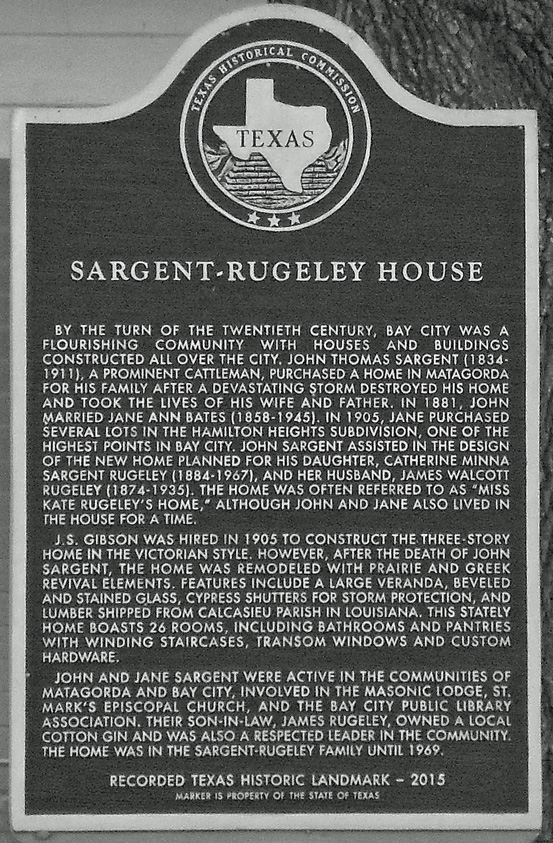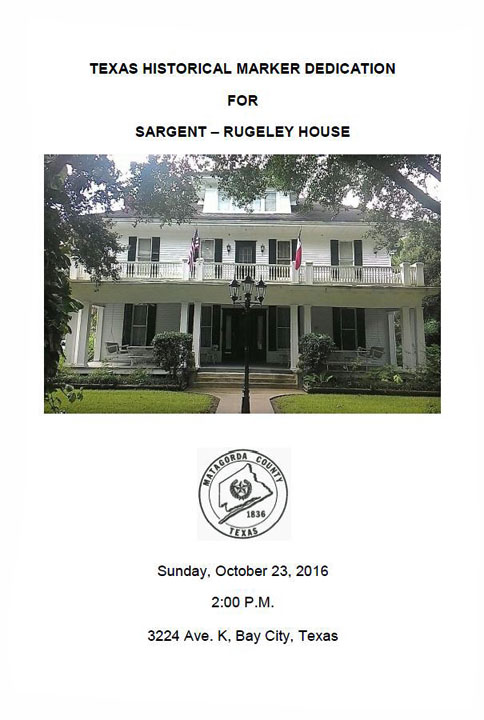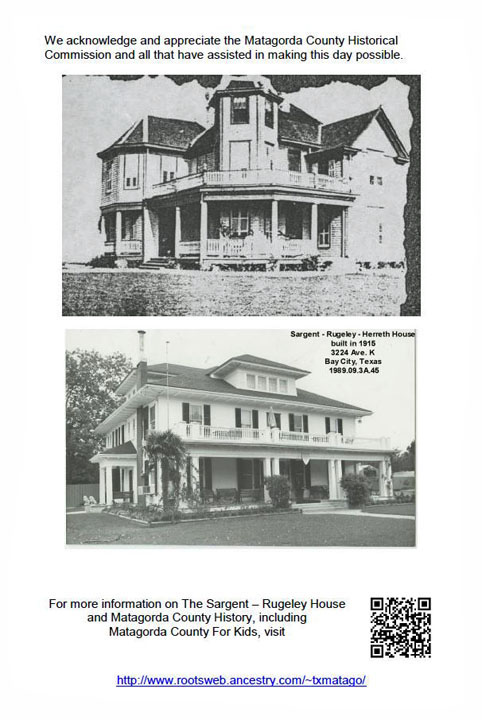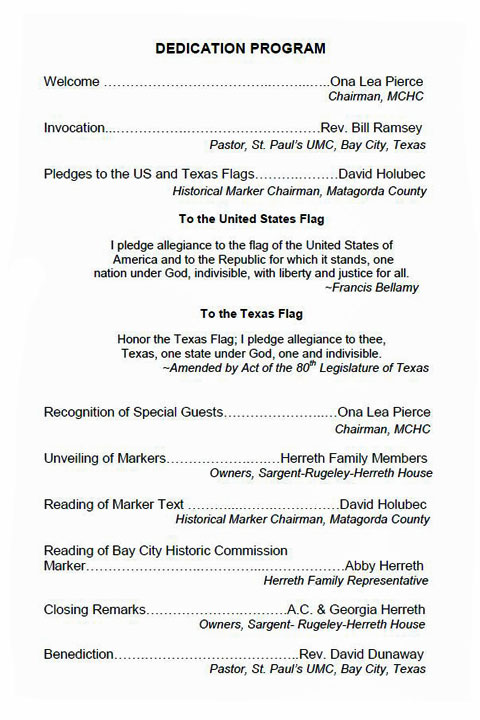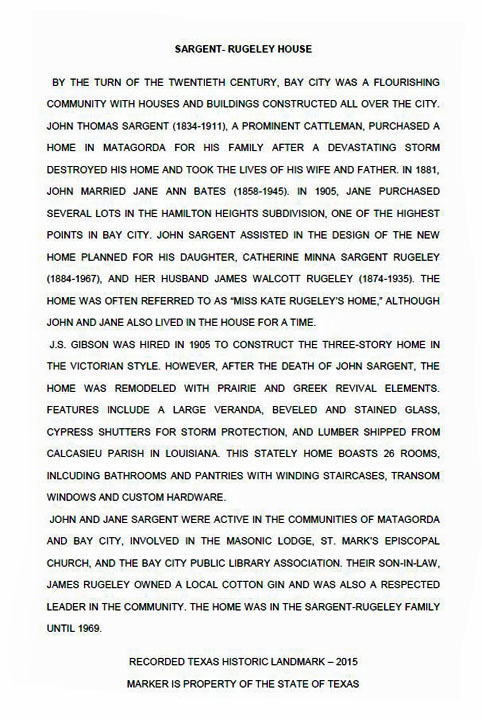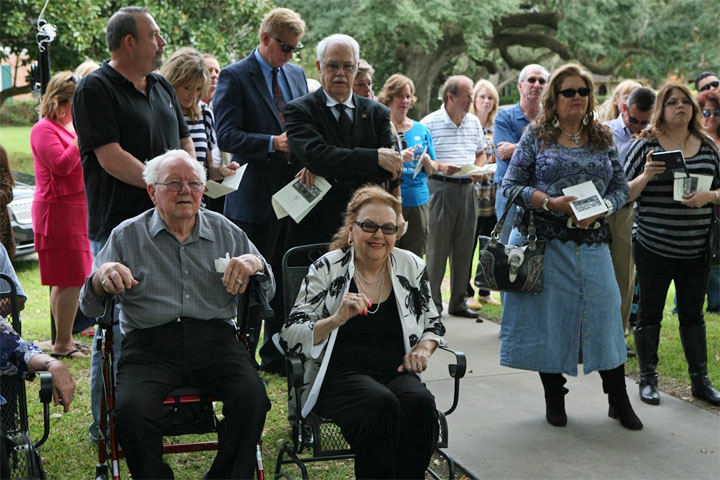|
|
|
|
|
Returning from a cattle drive up the Salt Grass and Chisholm Trails to Abilene, where he had sold three thousand head of cattle, John T. Sargent, received a message on September 14, 1875, that a hurricane was ravishing the Texas Gulf Coast. Riding day and night, Sargent reached home to find his home destroyed and could not locate his wife or children. He later found his children in a tree and brought them to safety. Two days later, he located the bodies of his wife, Sarah Ann Hill Sargent (1837 - 1875) and his father, George. Both had drowned on September 17, 1875, during the storm, and were buried in the Sargent cemetery in Sargent, Texas. Broken-hearted, he made the decision to move to the town of Matagorda, Texas with his daughters, Fannie P., Sarah Ann, Amelia, Mary Elizabeth, Josephine and his only son, George Thomas Sargent. Sargent purchased the Samuel Rhodes Fisher (1794 – 1839) home in Matagorda. Fisher was an original signer of the Texas Declaration of Independence. While living in Matagorda, Texas, Sargent married Jane Ann Bates (1858 – 1945) on August 31, 1881. They had one daughter, Catherine Minna Sargent (1884 – 1967). Catherine, lovingly called, "Kate," married James Walcott Rugeley (1874 - 1935) on June 6, 1906. On September 30, 1905, Jane A. Sargent purchased Lot 7 out of 15.5 acres in the Elisha Hall League known as Hamilton Heights subdivision from W. W. Campbell (1870 – 1951) and Antonia Ernst Campbell (1871 – 1948). She later purchased Lots 4, 5, and 6 from Fannie P. Sargent Hamilton (1859 – 1926) on October 7, 1905. This portion of land is one of the highest points in Bay City. During the flood of December 1913, the location was a gathering place for the Sargent – Rugeley family to escape the rising water.
J. S. Gibson (1875 – 1913) was hired as the general contractor. The three-story Victorian style house was built facing east. It took two years to complete. After the death of Mr. Sargent, in 1911, plans were begun to redesign the exterior of the structure. James Walcott Rugeley had never liked the Victorian style of the home, and as the head of the household, made the decision to begin rebuilding the exterior of the home in 1913 to reflect the Prairie architectural style developed around the turn of the century by Frank Lloyd Wright. The remodeled home was completed in 1915. The style is tempered with classical Greek Revival elements. The redesign included a ten foot by fifty foot veranda with ten supporting columns. The uniqueness of the home is further emphasized through the use of extensive beveled glass; stained glass windows; customized copper door hardware; and beautiful brass and crystal chandeliers. Elegant proportioning and quality detail make this well-designed structure one of the finest residences in Bay City. The exterior decking and interior floors are one and one-fourth inch heart of pine planks. The structure is fifty feet by fifty feet and rises forty feet from its brick foundation. The twelve by twelve inch foundation beams are made of cypress wood and the diagonal pine sheathing is covered with cypress shiplap. The lumber for the home was shipped to Bay City from Calcasieu Parish, Louisiana. The gutters and downspouts are made of solid copper. The molding around the third story roofline, matches the patterning of the gutters. The window screens are hung on the inside and they slide up and down on runners and springs, instead of in and out on hinges. They bear the patent date of September 6, 1898. Each window has a functioning cypress shutter made to fit the window for protection against Gulf storms. Two cement hitching posts, with steal rings, flank the front walkway. The house consists of approximately twenty-six rooms, counting bathrooms, pantries, storerooms and the great hall on the second story. There are seven exterior doors and sixty-four windows. You enter into the large living room through a massive door surrounded by beveled plate glass windows on each side. This room is twenty-four feet by thirty-four feet. A stately five foot by seven foot wide fireplace is positioned on the south wall. On the left of the fireplace is a beautiful, leaded, stained-glass window. Adjoining rooms may be closed off with massive cypress sliding doors. The ground floor also includes a study, dining room, kitchen, pantry, servery, wash room, bathroom, parlor and study. The ceilings on this floor are nine and a half feet tall. Up the winding, paneled staircase is a great hallway on the second story with nine and a half foot ceilings. The twelve foot by forty foot gallery gives access to library, bedrooms, baths, back staircase and the staircase leading to the third floor. The second story doorways are nine feet tall, including transom windows and are opened using glass doorknobs. The third floor has nine and a half foot ceilings, with rooms arranged in a cross pattern, providing perfect cross ventilation as well as a magnificent view in all directions. John T. Sargent and his wife Jane were active in the communities of Matagorda and later Bay City. Mr. Sargent was a charter member of the Bay City Masonic Lodge, No. 865, which was chartered on December 4, 1902. He was known throughout Matagorda County as a fine rancher and cattleman. His decedents still operate a cattle ranch near the community of Sargent which bears his name. Catherine Sargent Rugeley was a devoted wife and mother. She was active in St. Mark’s Episcopal Church in Bay City. She was a former chairman of the Bay City Public Library Association and hosted meetings and receptions at her home. James W. Rugeley owned a local cotton gin and was a respected business leader in the community.
Georgia Rice wed Albert Herreth, Jr. on March 7, 1947, at the First Christian Church of Bay City in a ceremony performed by the Reverend Luke Bolin (1915 – 1997). They made their home in Bay City, Texas with their children, Melissa Diane Herreth (1951 – 2004), Albert Elton "Abby" Herreth and Brett Ramzel Herreth. Albert Casper Herreth, Jr., was born on October 10, 1926 in Collegeport, Texas to Albert Casper Herreth, Sr. (1891 – 1949) and Elizabeth Clara Gavender (1899 – 1991). The family made their home in Blessing, Texas. Herreth attended school in El Maton, Texas and Blessing, Texas. On January 2, 1945, he left high school and enlisted in the United States Army, where he received his Parachutist’s badge and wings on June 1, 1945, from Fort Benning, Georgia Paratrooper School. He was assigned to the Headquarters and Service Company of the 864 th Aviation and Engineers Battalion and sent to the Asiatic-Pacific Theater on August 28, 1945. Herreth received an Honorable Discharge on November 15, 1946, achieving the rank of Sargent.Senate Bill 387, passed by the 2001 Texas Legislature, allows public school districts to issue a high school diploma to a person who left high school before graduation to serve in World War II. Herreth received his belated high school diploma, wearing a cap and gown, to a standing ovation, from Tidehaven I. S. D. as he fully participated in the graduation ceremony with the other class members of the Graduating Class of 2002. Mr. Herreth received certification as a Senior Engineering Technician from the Institute for the Certification of Engineering Technicians. He was employed by Dow Chemical Company, Texas Division on January 30, 1947, and served this field of work for forty years. Herreth operated a contracting business and managed the family property holdings. In 1957, the couple built their first rental property and continued buying and selling property up until 2014, doing business as Herreth Properties. He was a life member of VFW, American Legion, Deacon at the First Christian Church and a member of Saint Paul’s United Methodist Church. Georgia Irene Rice was born on March 14, 1931 in Sweetwater, Texas to Ira Elton "Jack" Rice (1907 – 1992) and Mary Rena Ramzel Rice (1913 – 1996). Jack and Rena were married on February 23, 1929, at the home of her parents in Sweetwater, Texas. The family settled in Bay City, Texas in 1937. Jack Rice’s family had made their home in Texas since the 1860s. Jack Rice was born on October 3, 1907 in Comanche County, Texas. Rena Ramzel was born in Sweetwater, Texas on June 30, 1913. Her family had made their home in Texas since the 1830s. The couple was very active in their community. They were members of the Knights of Columbus, Bay City Chamber of Commerce, "100" Club, Matagorda County Cancer Society, Matagorda County Federated Women’s Club and Woodmen of the World. Both served as president of the Woodmen of the World. Rena was a member of the Daughters of the Republic of Texas and The United Daughters of 1812. Jack was a charter member of the Cradle of Texas Chapter of the National Society and the Texas Society of the Sons of the American Revolution. Jack was active in the Girls’ Softball Association, and their field, "The Jack Rice Field," was named in his honor. Georgia Rice Herreth worked as the church secretary, a clerk for the Selective Service and an agent for Statewide Modern Homes. In 1970 she received her certification as an instructor from the Ben Shaw School of Modeling in Houston. She operated her own studio from 1973 – 1976. Mrs. Herreth was the first woman elected to the City Council of Bay City, serving two terms, 1979 – 1983. She was awarded the Bay City Chamber of Commerce "Outstanding Woman of the Year" in 1990. Her political activities were not limited to local politics. She was an active member of the Democratic Party, was an alternate delegate to the National Democratic Presidential Convention in 1980. She also enjoyed the honor of serving as Matagorda County’s first woman county Democratic Party Chairman. In 1986, Georgia was president of the Bay City Chamber of Commerce. She was a life member of the Matagorda County Museum Association, Matagorda County Historical Commission, Matagorda County Genealogical Society, Bay City Library Association, and active in the Matagorda County Texas Sesquicentennial Committee, the Bay City Community Theater and the Houston – Galveston Area Council. She was a Deaconess and board chairman of First Christian Church and a member of Saint Paul’s United Methodist Church. Georgia was president of the Matagorda County Chapter of the American Cancer Society and served on the board of the Matagorda County United Way. Herreth was also an active member of The Daughters of the Republic of Texas and The Daughters of the American Revolution. Georgia is honored to be a direct descendent of Lancelot Andrewes (1555 – 1626). Andrewes was an English bishop and scholar, who held high positions in the Church of England during the reigns of Queen Elizabeth I and King James I. During the latter's reign, Andrewes served successively as Bishop of Chichester, Ely and Winchester and oversaw the translation of the Authorized Version (or King James Version) of the Bible. She is also a direct descendent of Thomas Gardner (1592 - 1674), the first overseer of the Massachusetts’s Bay Plantation in 1630 and a direct descendent of William Stiles, Sr. (1769 – 1836). William Stiles, Sr. was born in Mecklenburg County, Virginia on March 26, 1769. He was married in Elbert County, Georgia on May 26, 1792 to Esther Hetty Vinson (1769 – 1840). She was born Feb 4, 1769, to Jesse Vinson (1717 - 1801) and Esther Dawson Vinson (1721 – 1820). William Stiles, Sr. and his family, crossed the Arbuckle Mountains and settled in "Old Miller" County, Arkansas. The family made their home at the mouth of Mulberry Creek on the Arkansas River during 1816-18. The famous botanist, Thomas Nuttall (1786 – 1859) wrote that he stayed in the home of William Stiles during that period. During the winter of 1818 - 1819 he moved near present day Fort Towson, moving next to Red River County, Texas. In 1821 Stiles and his family joined Stephen F. Austin (1793 – 1836) and Austin’s "Old Three Hundred" families who were going south. Stiles received a labor of land in Fort Bend County and died there June 2, 1836. He is buried in the family cemetery located in the George Ranch Historical Park which includes some of his original land. The Will of William Stiles, Sr. was the first filed in Fort Bend County. He made his living as a stockman. Hetty and William Stiles, Sr. were the parents of six children; Richard, John, Sr., William Jr., Nancy, Elizabeth and Hetty. Son John Stiles, Sr. stayed in Red River County. On his way to the Alamo, Davey Crockett (1786 – 1836), spent his first night in Texas in the home of his old Tennessee friend, John Stiles. Stiles, Isiah D. Lawson (1806 – 1847), and another man were named by Capt. William Becknall (1787 – 1856) and Lt. James Clark (1799 – 1838) to have personal charge of Antonio López de Santa Anna (1794 – 1876) just hours after his capture following the Battle of San Jacinto. Gen. Sam Houston (1793 – 1863) knew John Stiles quite well and was quoted as saying, "The very man! I know that if anyone would try to take the life of Santa Anna, it would be over the dead body of John Stiles." Daughter Nancy
Stiles (1804 – 1851), married Henry Jones (1789 – 1861), one of
Austin's Old Three Hundred on Jan 31, 1821. The newlyweds left Red
River County and traveled with family to south Texas in the winter
of 1821-22. Her son, William Stiles Jones (1822 – 1875), was born
April 19, 1822 at the crossing on the Brazos River, under a live oak
tree, near present day Independence, and has the distinction of
being the first male child born in Austin's Colony. |
|
Black and white photo at top courtesy of Matagorda County Museum Color photo courtesy of David Holubec Black and white Victorian photo courtesy of A. C. & Georgia Herreth |
|
Historical Marker Dedication October 23, 2016
|
|
||
|
||
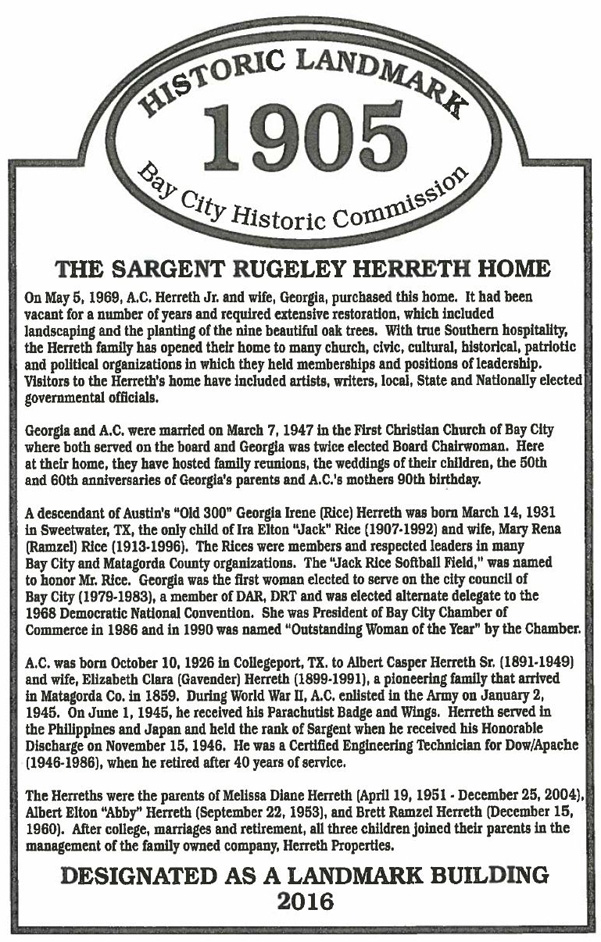 |
||
|
Photos below courtesy of Anthony Doubek
|
||
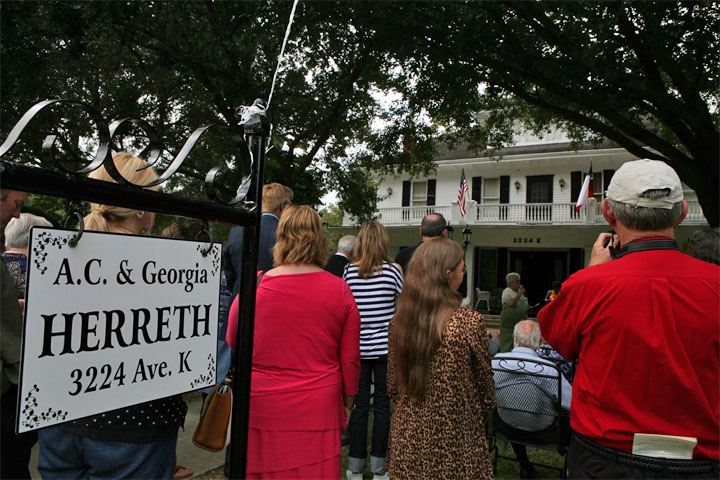 |
||
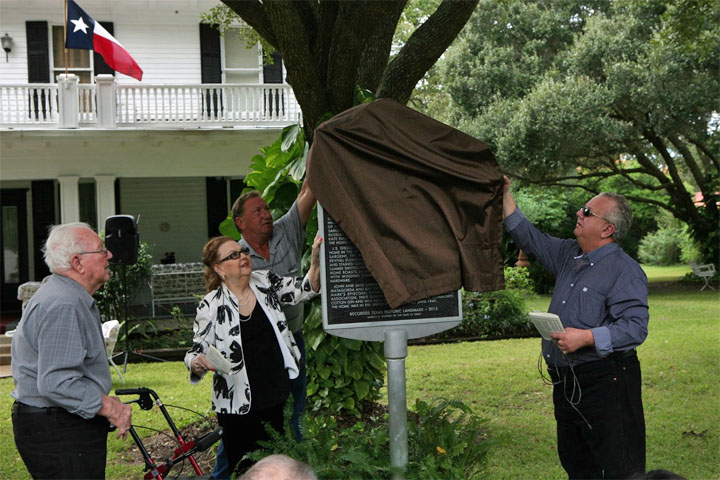 |
||
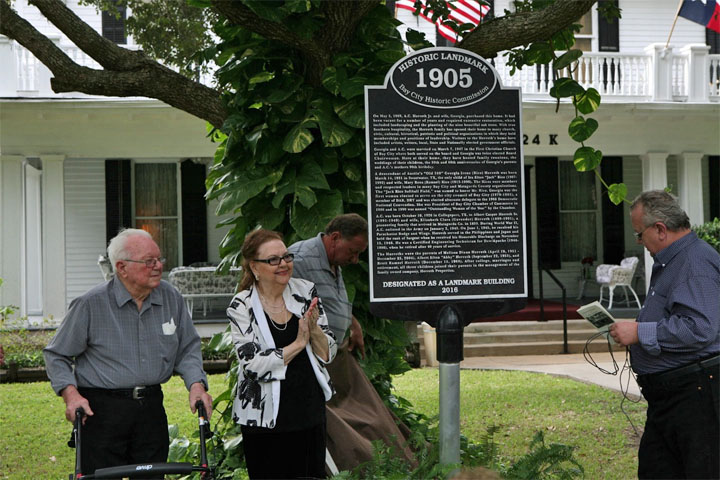 |
||
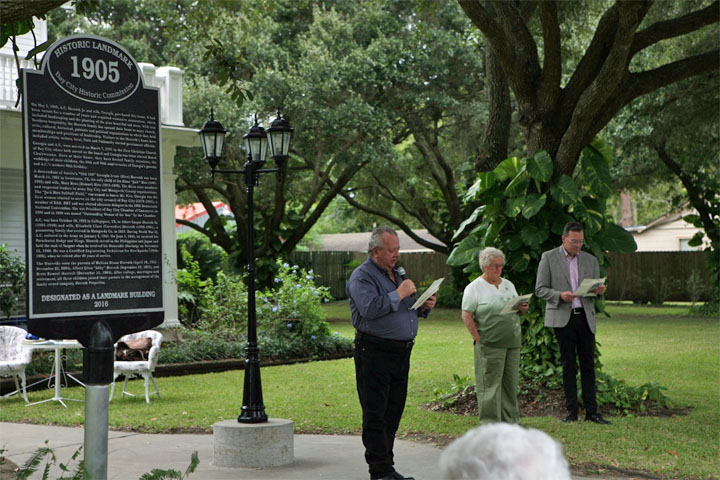 |
||
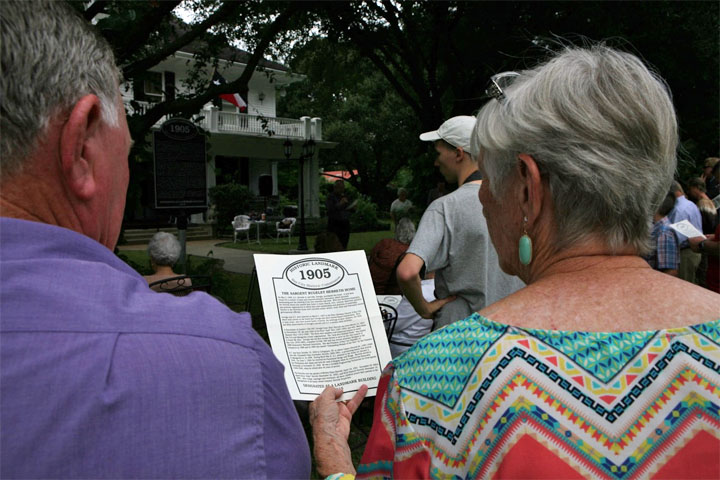 |
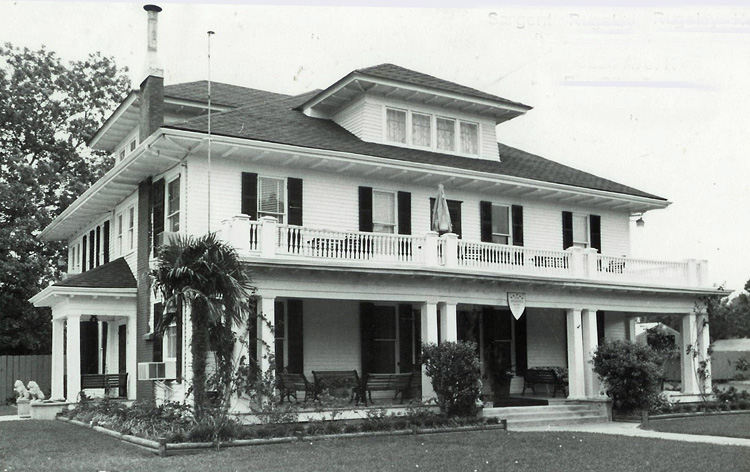
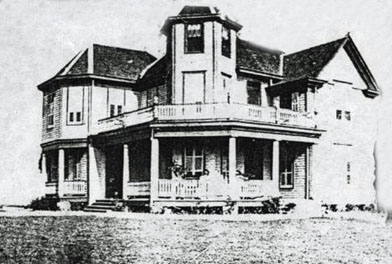 John
T. Sargent assisted in the design of the new home planned for the
Sargent family. The house was to be built in honor of his daughter,
the new
bride, Catherine Sargent Rugeley. For the longest period of time,
the Sargent – Rugeley - Herreth home was known as "Miss Kate Rugeley’s home." John T. Sargent and his wife Jane would eventually
reside in the home with their daughter Catherine and her husband
James Rugeley.
John
T. Sargent assisted in the design of the new home planned for the
Sargent family. The house was to be built in honor of his daughter,
the new
bride, Catherine Sargent Rugeley. For the longest period of time,
the Sargent – Rugeley - Herreth home was known as "Miss Kate Rugeley’s home." John T. Sargent and his wife Jane would eventually
reside in the home with their daughter Catherine and her husband
James Rugeley. 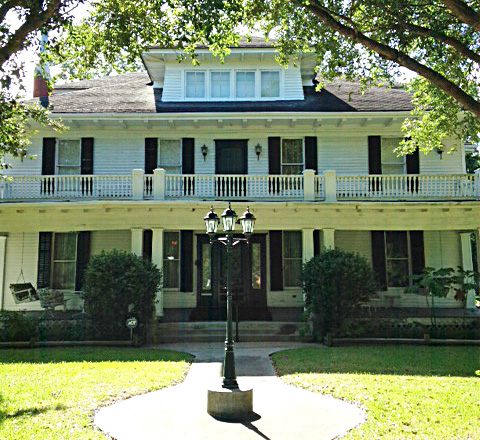 The Sargent -
Rugeley families owned the home from 1905 to 1969. Two years after
Catherine’s death, the home was sold to the current owners, Albert
Casper Herreth, Jr. and his wife, Georgia Irene Rice
Herreth on May 5, 1969.
The Sargent -
Rugeley families owned the home from 1905 to 1969. Two years after
Catherine’s death, the home was sold to the current owners, Albert
Casper Herreth, Jr. and his wife, Georgia Irene Rice
Herreth on May 5, 1969. 